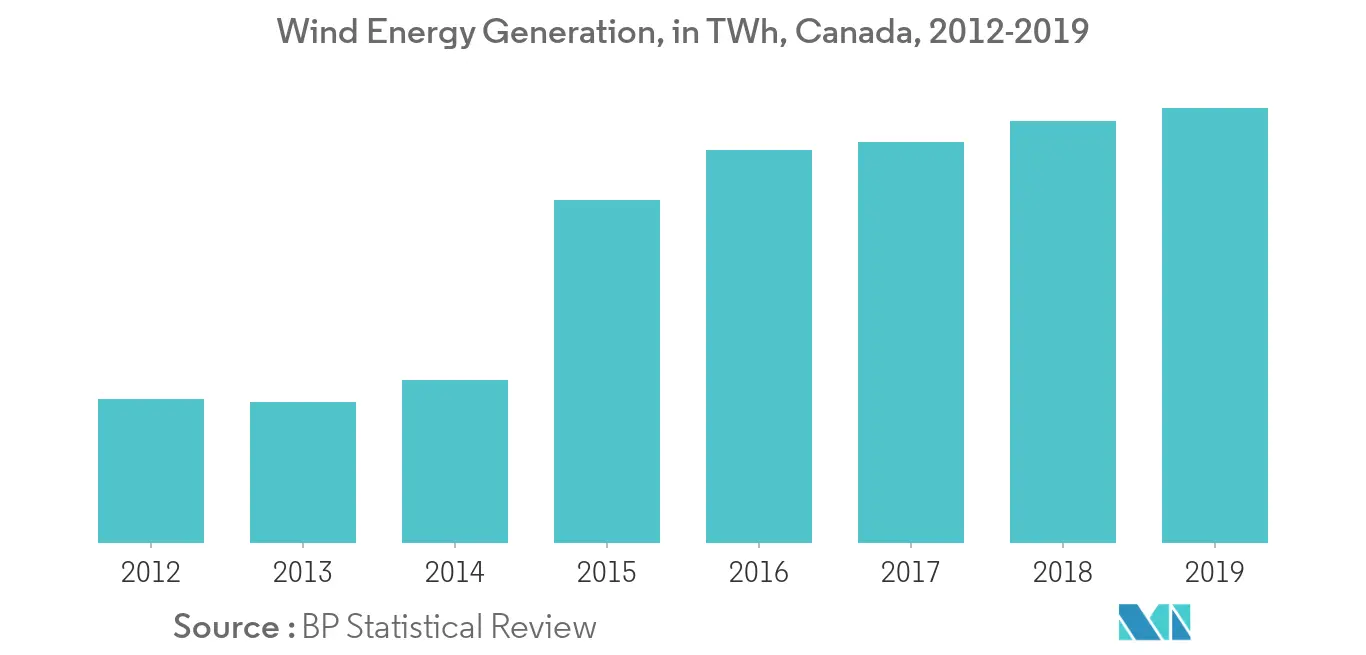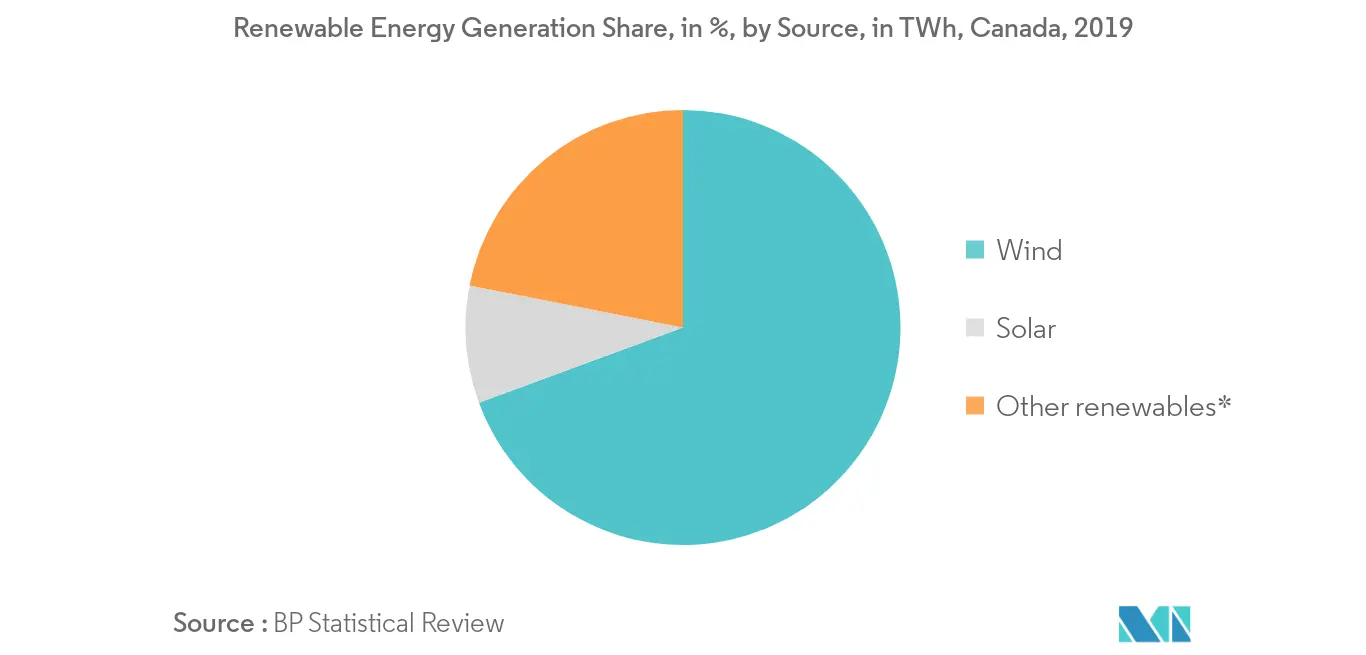Market Trends of Canada Power EPC Industry
This section covers the major market trends shaping the Canada Power EPC Market according to our research experts:
Wind Power is Expected to Dominate the Market
- During 2019, Canada increased its installed wind power capacity by 597 MW in 2019, registering about a 5% increase over the 2018 capacity. All of the new wind capacity added in 2018 came from the coastal project, and 2019 witnessed the completion of five projects, representing over USD 1 billion investment.
- As of 2019, Canada ranked eighth in the world in terms of total onshore installed capacity. There were 301 wind farms and 6,771 wind turbines operating across the country, as of 2019. Adding to this, the country witnessed around 70% dip in the wind energy costs during 2009-2019.
- Moreover, the country has a policy in place, under its energy transition law, to generate more than half of its electricity using clean energy sources by 2030. Long-term electricity auctions support this. The Canadian government was primarily focusing on expanding and liberalizing the electricity market, besides opening the industry to private and foreign investments, which likely to drive the Canada power EPC market during the forecast period.
- Furthermore, in the country, the production of wind power was initially driven by environmental concerns. However, it has been superseded by commercial interests. Moreover, the increased reliability convinced large companies to invest in renewable energies, such as wind, for fulfilling the increasing demand for electricity.
- Hence, with several wind energy projects under operation and others in the planning and construction phase, owing to investment and government policies are expected to dominate the Canada power EPC market during the forecast period.

Upcoming Project and Investment is Likely to Drive the Market
- Canada holds the second-largest installed wind power capacity in North America, with a total installed capacity of 13,413 MW in 2019. This installed capacity is enough to power approximately 3.4 million homes in the country. Moreover, there are 138 solar PV farms in Canada with a capacity of at least 1 MW, totaling over 1,700 MW. In 2018, the capacity of the solar photovoltaic industry in Canada was 3,040 MW.
- With the increasing need for affordable, reliable, clean, and diverse electricity supply, the government and utilities across the nation are increasingly considering wind and solar power as a solution. Moreover, with the country's unparalleled wind resources, there are ample opportunities to maximize the economic and environmental benefits associated with the development of wind energy.
- Moreover, Canada has 31 offshore wind farm projects of which none currently operating, none where construction has progressed enough to connect the turbines and generate electricity, none are in the build phase, and none are either consented or have applied for consent. These projects are expected to start from 2021 to 2022.
- The country has been looking for opportunities and potential locations across the national boundaries for new projects. In the past few years, Alberta emerged as an attractive market for investors, as it is likely to witness about USD 12.3 billion of investment for developing wind and solar energy projects by 2030.
- In 2019, Alberta Utilities granted permission for a 400-megawatt Canadian solar facility (Travers solar project), expected to be the largest operating solar energy project in Canada. Travers Solar project would start in 2020, with commercial operations slated for 2021.
- Furthermore, the Government of Alberta announced five new wind power projects, with a value of USD 1.2 billion, under its renewable electricity program. The project is expected to generate about 760 MW of affordable renewable electricity, enough to power nearly 300,000 homes. Apart from Alberta, Saskatchewan is also likely to witness huge investments, as the province aims to increase its renewable capacity to 50% by 2030.
- Hence, owing to the factors mentioned above, such as investment, upcoming projects, and policies are likely to drive to the market studied during the forecast period.

